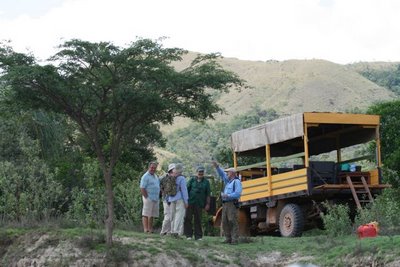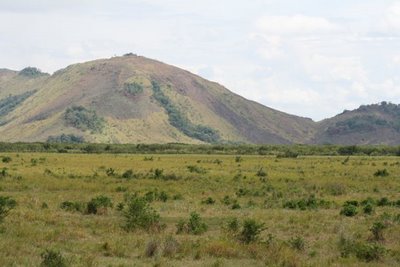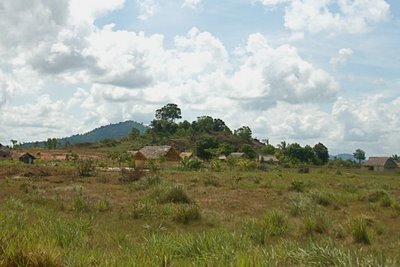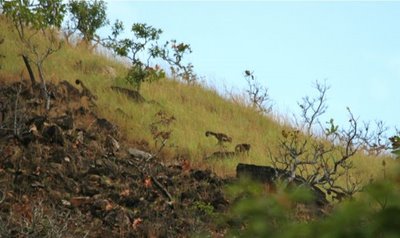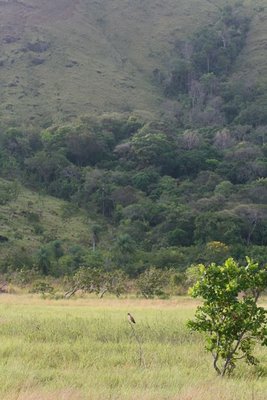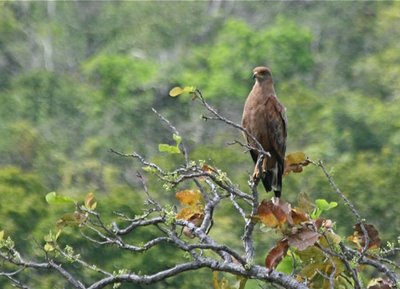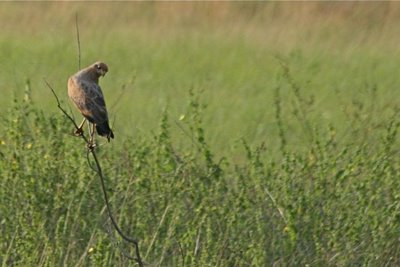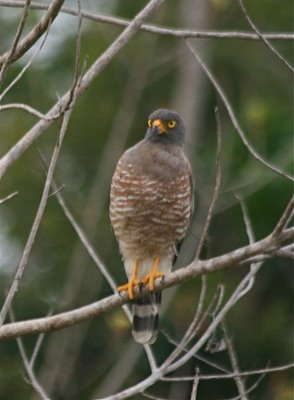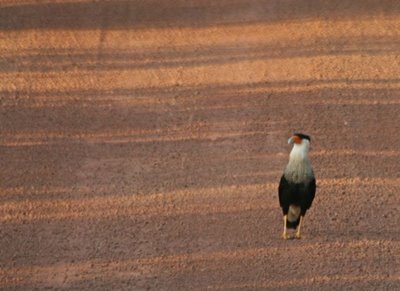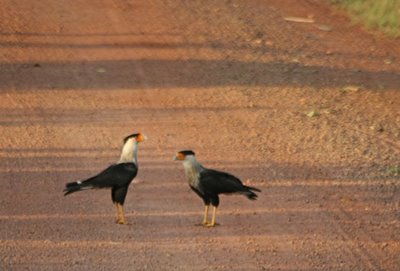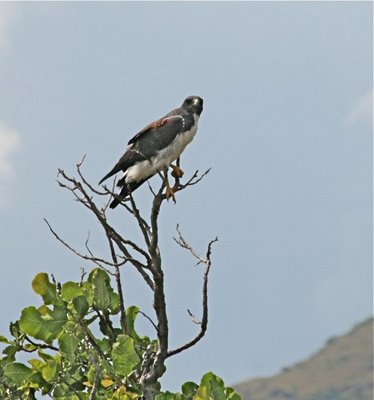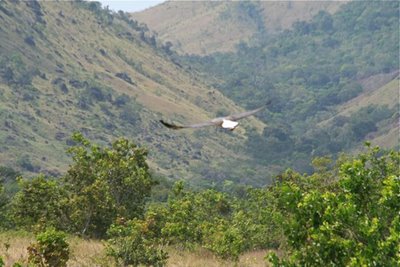Funky Georgetown
On our trip to Guyana, I had experienced some of the humor and joie de vive of the people. When I photographed these guys carrying a 100-lb forest log, they put it down and ran up to me saying, "NO PHOTOS! YOU HAVE TO PAY US!" which mortified me practically into a fetal position until they cracked up laughing, picked up the log and went on their way, waving.
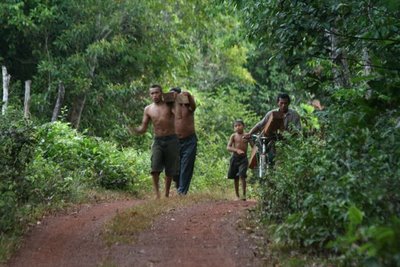
In Georgetown, these girls gave me a solid gold performance, gyrating and undulating with unmistakable Afro-Caribbean verve. So cute.
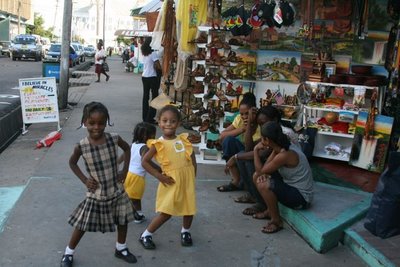
I had marveled at how Guyanans accomplish so much with so very little. Every book in the open-air schools we visited was mottled with mildew. The humid climate is a cruel overlord. I would be unable to draw with pencil or paint in watercolors here. My drawings and paintings would curl, get moldy and succumb to fungus within weeks. I guess I'd paint in acrylics. I can't imagine painting with anything but watercolor, but then I don't have to. I feel blessed to live where the climate doesn't actively ruin many of the things I hold dear. I will overlook for the moment the frost threat that constantly hangs over my heirloom lilac and peach tree.
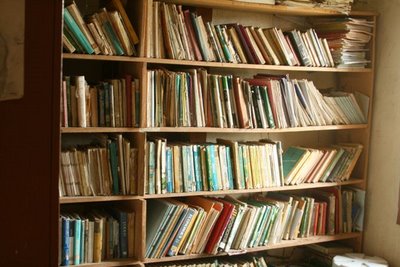
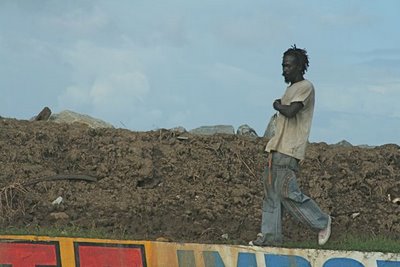
As we whizzed by, I wished I could walk for hours, appreciating each panel.
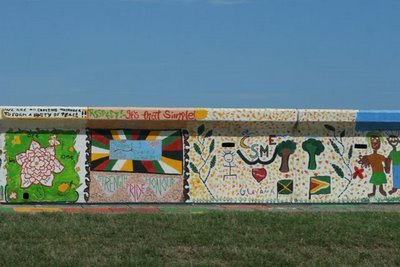
A favorite:
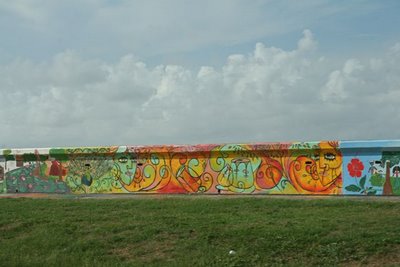
Even our bush planes had depictions of giant otters and harpy eagles:
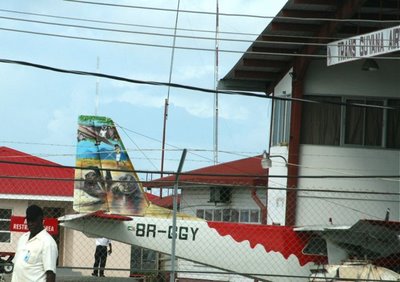
The advertising art on the seawall (the only thing that keeps Georgetown from being under five feet of ocean) was a thing unto itself. I loved it.
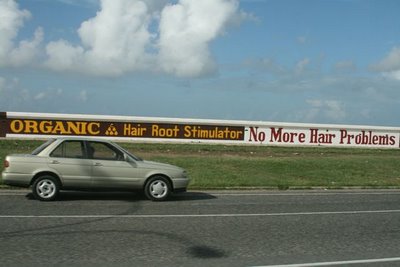
Because the population is largely Afro-Caribbean, there is a lot of attention to hair products:
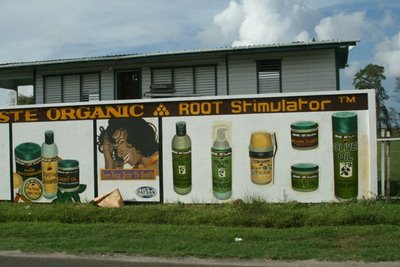
I definitely could have used some root stimulator. My hair looked like a road-killed squirrel the whole trip. Today it looks like Chachi's from Joanie Loves Chachi. Cool.
On our TV at the grandiose Hotel Pegasus, which looked like a salt shaker,
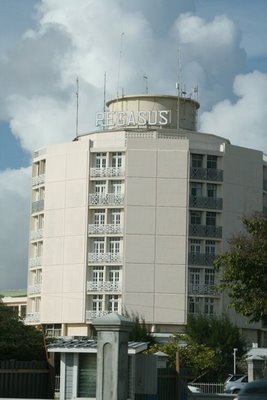 there was a guy selling a device you mount on your bathroom wall that actually dispenses toothpaste.
there was a guy selling a device you mount on your bathroom wall that actually dispenses toothpaste.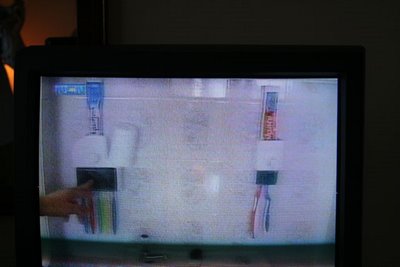
But wait, there's more. It also gives you a place to hang your toothbrushes. Which, he pointed out many times, is very healthy. The infomercial dude put a heavy health/hygiene spin on this gizmo. Basically you insert your tube of toothpaste, press a button and Presto! you get toothpaste on your toothbrush. It's got to be much easier than squeezing a tube and losing the cap every time. At least that was what he said.
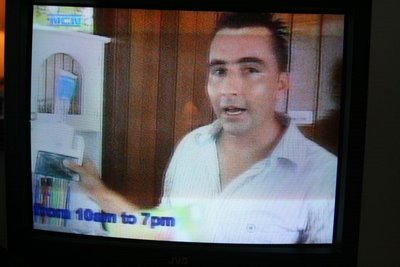
After being in the back country for ten days, it was a hilariously refreshing way to spend ten minutes, watching an infomercial for something nobody wants because nobody needs, like Zizzer-zoof seeds.
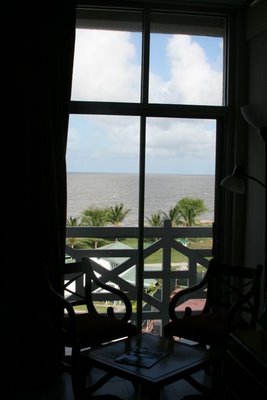 The view out our window. It was air-conditioned, and it felt heavenly, but not as heavenly as a hot shower in a cool room. Ahhhhh. The grime of ten days of cold showers fell away.
The view out our window. It was air-conditioned, and it felt heavenly, but not as heavenly as a hot shower in a cool room. Ahhhhh. The grime of ten days of cold showers fell away.Erica and I wandered into a variety store that sold everything from bras to furniture. I loooved this set.
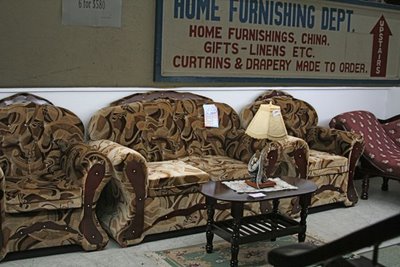
It was tropicalismo, way over the top. Elvis would have grabbed this for the Jungle Room. Our furniture is so drab by comparison, so tastefully lacking in texture and flair.
And then there's Smalta. We don't know what it is, but we should drink it. Why? Because it's good.
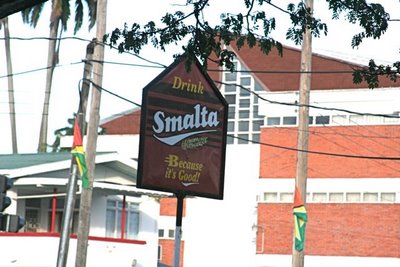
In case you think the thing under the Smalta swoosh will reveal the mystery, it doesn't. It's a sheaf of wheat. Which leads me to believe Smalta might be a kind of beer. Mmmm, good.
The mystery deepened with this ad for Cheekies. For Happy Cheeks.
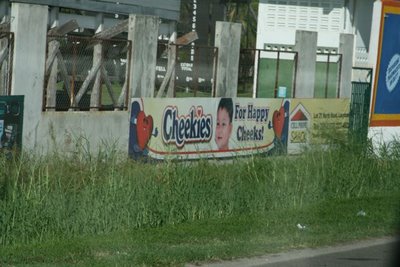
I have got to think this is some kind of didey. But I don't know. Maybe there's a climate-related cheek issue in Guyana I know nothing about.
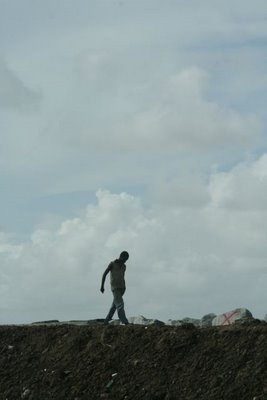 It kind of figures that the best bird pictures I'd take on the whole trip (unless you take into consideration the rarity of the bird, which favorably weights a lousy picture) were at our hotel in Georgetown. A roadside hawk (Buteo magnirostris) was hanging out in the courtyard, waiting for something.
It kind of figures that the best bird pictures I'd take on the whole trip (unless you take into consideration the rarity of the bird, which favorably weights a lousy picture) were at our hotel in Georgetown. A roadside hawk (Buteo magnirostris) was hanging out in the courtyard, waiting for something. 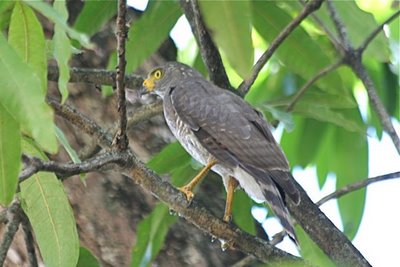 This little buteo lives almost everywhere, hanging out along roads and rivers, waiting for snakes, lizards, rodents, insects, whatever it can find and swoop down upon.
This little buteo lives almost everywhere, hanging out along roads and rivers, waiting for snakes, lizards, rodents, insects, whatever it can find and swoop down upon. 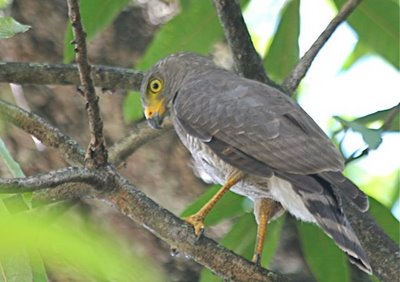 It was a lovely farewell gift, to spend time with this little hawk, shooting him off a hotel balcony, in a place with adequate light. That's saying something when you've been trying to make photos in the darkest durn forest you've ever seen for ten days.
It was a lovely farewell gift, to spend time with this little hawk, shooting him off a hotel balcony, in a place with adequate light. That's saying something when you've been trying to make photos in the darkest durn forest you've ever seen for ten days.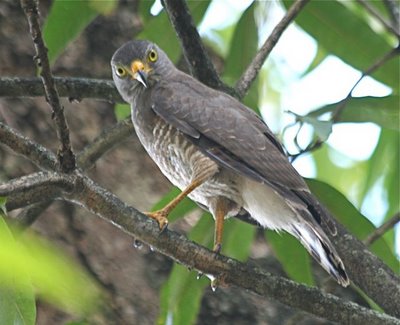 You got a problem with my forest?
You got a problem with my forest?Labels: advertising art, Buteo magnirostris, Cheekies, Elvis' Jungle room, Georgetown seawall, Guyanese art, Hotel Pegasus, infomercial, roadside hawk, Smalta, toothpaste dispenser

